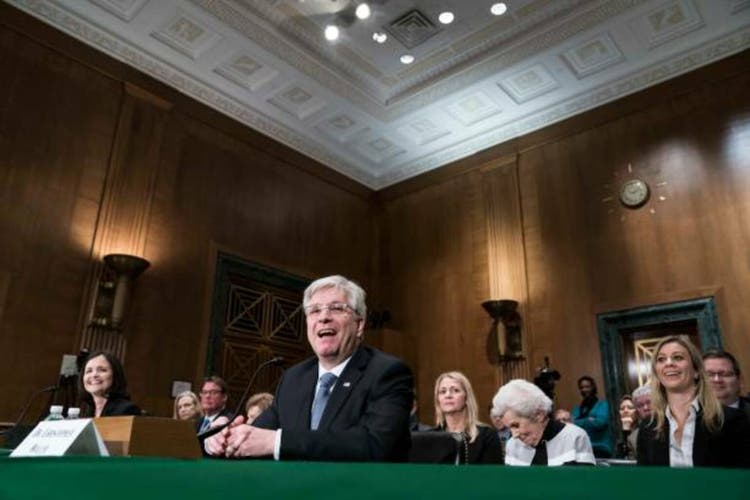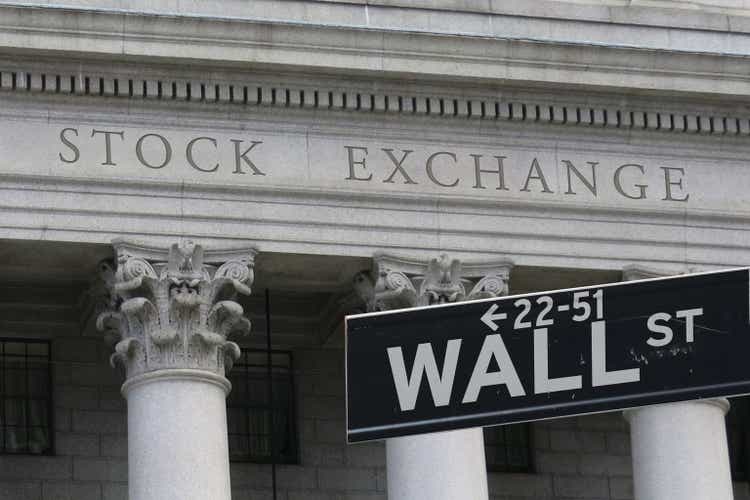- Trump’s tariff threats—potentially up to 30% on E.U. imports—may tip Europe into recession by late 2025, some analysts say. European exporters are heavily reliant on the U.S. market, especially in autos and pharmaceuticals. The U.S. is the largest trading market for both the E.U. and the U.K. Stock markets remain buoyant for now, seemingly on the assumption that deals will be struck lowering the rates.
U.S. Federal Reserve Governor Christopher Waller said yesterday that he thinks the Fed should cut interest rates at the end of July because he thinks the U.S. economy’s “momentum has slowed significantly,” and he’s worried about unemployment rising.
He’s not alone. Oxford Economics’ Ryan Sweet told clients this week that President Trump’s tariffs will shave growth off the U.S. economy. “The hit to US GDP growth is 0.1ppt this year and 0.3ppts next year,” he wrote in a note seen by Fortune.
While the tariffs’ effects on the Fed rate and the U.S. economy have generated most of the headlines recently, they are having a serious negative effect on the European economy too.
Trump has threatened to impose a 30% tariff on that trade if the parties don’t strike a better deal. Analysts are saying that if no deal is reached, the tariff barrier could push Europe into a recession.
“A 30% US tariff on EU exports would send the EZ economy into recession in the second half of 2025,” Pantheon Macroeconomics’ Claus Vistesen said in a recent research note. “Markets don’t believe Mr. Trump’s tariff threats, but a US-EU escalation cycle is still a big near-term risk. The ECB will hold fire [on retaliating] in July unless it is absolutely certain a 30% tariff is coming over the summer.”
“A sustained 30% US tariff … would pull down our 2025 and 2026 growth forecasts by 0.3pp and 0.5pp, respectively, to 0.7% and 0.8%,” he said.
At Oxford Economics, Angel Talavera agrees: “We estimate the US tariffs of 30% on imports from the EU threatened by President Trump could shave up to 0.3ppts off annual Eurozone growth over the next two years. This would push the Eurozone economy to the edge of recession, with growth stagnating over the coming quarters,” he wrote in a recent note.
Unemployment in the U.K. is already on the rise—it ticked up to 4.7% over the last three months, the highest in four years.
The problem is that the U.S. is Europe and Britain’s largest export market. About 20% of EU exports go to the U.S. at a value of around €500 billion ($581 billion). Europe’s trade doesn’t immediately have anywhere else to go—at least not at that scale.
“The sheer size of the US economy means that it takes a large share of Europe’s exports, particularly pharmaceuticals and autos. This will make it difficult for Europe to switch to other markets,” Oxford Economics’ Matt Swannell said in a note this week.
It’s not just the size of Trump’s tariff demand, it’s the complexity. “On top, there are sectoral tariffs of 25% on cars/parts, as well as 50% on aluminum and steel (up from 25% since June 4). Effective tariffs rates could remain at 12-17% (assuming a 10-20% universal tariff), which is significantly higher than the around 1% at the start of the year with automotives, steel and potentially pharma hit by sectoral tariffs,” Deutsche Bank’s Marion Muehlberger and Ursula Walther told clients this week. Pharmaceuticals are one of the biggest export markets for Europe, and Trump has threatened to tax them at a rate of 200% on entry to the U.S.
Finally, there’s the ever-changing nature of Trump’s demands. Until a few weeks ago, a 30% tariff wasn’t even on the radar.
“In June, the ECB’s baseline scenario assumed just a 10% tariff, and even the downside scenario only went up to 20%. A 30% tariff would be more damaging to the eurozone economy, even if European retaliation eventually pushed inflation higher,” ING’s Carsten Brzeski said in a research note this week.
European stock markets are whistling past this graveyard at the moment. The Stoxx Europe 600 and the UK’s FTSE 100 are both at or near all-time highs. France’s CAC 40 is up 6% YTD and Germany’s DAX blue chip index is up a staggering 21.69% YTD, based largely on Germany’s big fiscal military spending plan.
Here’s a snapshot of the action prior to the opening bell in New York:
- S&P 500 futures were flat this morning, premarket. The index closed up 0.54% yesterday.
- STOXX Europe 600 was up 0.4% in early trading.
- The UK’s FTSE 100 was up 0.32% this morning, placing it above 9,000, which would be an all-time high if it holds.
- China’s CSI 300 was up 0.6%.
- Japan’s Nikkei 225 was down 0.21%.
- Bitcoin is still above $118K.
This story was originally featured on Fortune.com

 3 hours ago
1
3 hours ago
1



















 English (US) ·
English (US) ·